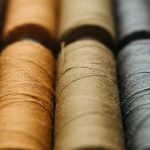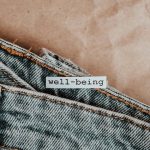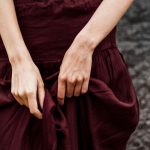You’ll find 100% polypropylene fabric is a lightweight, strong thermoplastic that resists moisture, stains, and chemicals. It dries quickly, repels mildew, and holds up well through wear, making it perfect for activewear, medical gear, and industrial uses. Because it maintains shape and strength without absorbing water, it feels comfortable and lasts long. If you want to understand how it’s made, used, and cared for, there’s more valuable information ahead.
Table of Contents
Key Takeaways
- 100% polypropylene fabric is a lightweight, durable thermoplastic polymer made from continuous filaments of melted and extruded polypropylene.
- It naturally resists moisture, dries quickly, and does not absorb water, making it ideal for moisture-wicking and stain resistance.
- The fabric is chemically resistant, mildew-resistant, and maintains strength and shape over repeated use.
- Polypropylene fabric provides good insulation without bulk, resists fading, and holds up well in harsh or outdoor environments.
- Commonly used in medical textiles, activewear, and industrial packaging due to its durability, moisture resistance, and lightweight properties.
Understanding Polypropylene as a Material
Polypropylene is a versatile thermoplastic polymer that you’ll find in many everyday products. When it comes to fabrics, polypropylene stands out because it’s lightweight, strong, and resistant to moisture.
You’ll notice it doesn’t absorb water, which helps fabrics dry quickly and resist stains. Plus, it’s naturally resistant to chemicals and mildew, making it a smart choice for outdoor gear and activewear.
You’ll appreciate its durability, as it can withstand repeated wear without losing shape or strength. Also, polypropylene fabric offers good insulation, keeping you warm without adding bulk.
Because it’s easy to clean and maintain, you won’t spend extra time caring for it. Overall, polypropylene’s unique combination of properties makes it practical for various uses, from athletic wear to upholstery, giving you lasting comfort and performance.
Manufacturing Process of Polypropylene Fabric
Although the manufacturing process involves several complex steps, you’ll find that creating polypropylene fabric begins with melting the polymer pellets into a molten state.
Once melted, the polymer is extruded through spinnerets, forming fine continuous filaments. These filaments cool rapidly, solidifying into fibers.
Then, the fibers undergo drawing, which stretches them to align molecular chains, increasing strength and flexibility.
Afterward, the fibers are spun into yarns, ready for weaving or knitting into fabric.
Depending on the desired texture and application, the fabric may receive additional treatments like heat setting or calendaring to enhance stability and smoothness.
Throughout this process, controlling temperature and extrusion speed is essential to guarantee consistent fiber quality.
Key Characteristics of 100% Polypropylene Fabric
Durability stands out as one of the most impressive features you’ll find in 100% polypropylene fabric. You’ll notice it resists wear and tear better than many other materials.
It’s also lightweight, making it easy to handle and comfortable to wear. This fabric naturally repels moisture, so it dries quickly and stays dry longer, which is great for active use.
You’ll appreciate its resistance to chemicals and stains, helping maintain its appearance over time. Polypropylene fabric doesn’t absorb water, so you won’t have to worry about mold or mildew buildup.
Plus, it offers good insulation, keeping you warm without adding bulk. Finally, it resists fading, so colors stay vibrant even after repeated washing and exposure to sunlight.
Advantages of Using Polypropylene Fabric
When you choose polypropylene fabric, you benefit from its exceptional resistance to moisture and stains, making it ideal for activewear and outdoor gear. You’ll also appreciate its lightweight nature and durability, which help you stay comfortable without sacrificing strength. Plus, polypropylene resists chemicals and mildew, so it lasts longer even in tough conditions.
Here’s a quick look at its main advantages:
| Advantage | Benefit | Why It Matters |
|---|---|---|
| Moisture Resistance | Keeps you dry | Perfect for sweaty or wet environments |
| Lightweight | Enhances comfort | Easy to wear and transport |
| Chemical Resistance | Increases lifespan | Suitable for harsh conditions |
These benefits guarantee polypropylene fabric performs well in demanding situations, giving you reliable, long-lasting wear.
Common Applications and Industries
The unique qualities of polypropylene fabric make it a top choice across various industries.
You’ll find it favored for its durability, moisture resistance, and lightweight nature.
Whether you’re working in healthcare, sports, or packaging, polypropylene fabric delivers reliable performance.
Here are some common applications you might encounter:
- Medical Textiles: Used in surgical gowns and masks due to its barrier properties.
- Activewear: Ideal for sportswear because it wicks moisture away, keeping you dry.
- Industrial Packaging: Popular for reusable bags and sacks thanks to its strength and resistance to wear.
Care and Maintenance Tips for Polypropylene Fabric
Although polypropylene fabric resists stains and moisture, you should still handle it with care to extend its lifespan.
When cleaning, use mild detergent and cold water to avoid damaging fibers. Avoid bleach or harsh chemicals, as they can weaken the fabric. You can machine wash polypropylene on a gentle cycle, but air drying is best to prevent heat damage.
Keep polypropylene away from direct sunlight for long periods, since UV rays may degrade the material over time. If you notice wrinkles, use a low-heat iron setting or steam cautiously.
To maintain its shape, store polypropylene items folded or hung in a cool, dry place. Following these simple care steps will help you preserve polypropylene’s durability and appearance for years.
Environmental Impact and Sustainability Considerations
Since polypropylene is a synthetic material derived from fossil fuels, you should consider its environmental impact before choosing it.
While it offers durability and resistance, polypropylene fabric contributes to plastic pollution and relies on non-renewable resources.
However, some sustainability efforts can reduce its footprint.
You can make more eco-friendly choices by:
- Selecting recycled polypropylene fabrics to minimize virgin plastic use
- Properly recycling or repurposing polypropylene products to avoid landfill waste
- Supporting brands that invest in sustainable manufacturing practices and reduce emissions
Frequently Asked Questions
Can 100% Polypropylene Fabric Be Safely Used in Food Packaging?
Think of 100% polypropylene fabric as a trusty shield—it’s safe for food packaging because it resists moisture and chemicals. You can confidently use it, knowing it keeps your food fresh without harmful leaks or contamination.
Is Polypropylene Fabric Hypoallergenic for Sensitive Skin?
You’ll find polypropylene fabric is generally hypoallergenic and great for sensitive skin since it resists allergens and irritants. However, always test a small patch first, as individual reactions can vary.
How Does Polypropylene Fabric Perform in Extreme Cold Conditions?
You won’t freeze like a popsicle wearing polypropylene—it traps heat so well, it’s like a cozy furnace against extreme cold. Plus, it wicks moisture away, keeping you dry and comfy no matter how icy it gets.
Can Polypropylene Fabric Be Dyed Different Colors Effectively?
You can’t dye polypropylene fabric easily because it resists most dyes. Instead, manufacturers add color during production, so you’ll find it in various vibrant shades, but post-production dyeing won’t work effectively on it.
What Are the Fire Resistance Properties of Polypropylene Fabric?
Did you know polypropylene melts at 320°F, not igniting easily? You’ll find it’s flame-resistant but will melt and drip under high heat, so it’s not ideal for fire-prone environments or protective clothing against flames.
- Allowable Fiber Stress in 50/50 Carbon Kevlar Biaxial Fabric - June 21, 2025
- Kevlar Fabric on Alibaba: Buying Guide for Bulk Purchases - June 21, 2025
- Albarrie Industrial Kevlar Felt: Durable Insulation for Machinery - June 21, 2025







